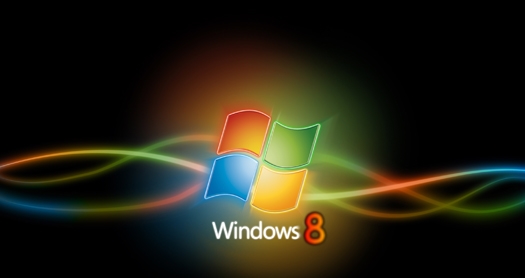Former Microsoft senior VP says Windows 8 on ARM tablets is a “scale 9 earthquake”
Windows 8 is just what Microsoft needs to take advantage of the ongoing irreversible shift from PCs to handheld devices including iPads, iPhones and other form factors yet to be designed, according to the company’s former OEM chief.
Just as Windows 7 won instant popularity after the debacle of Vista, Windows 8 is poised to capture business from phone and tablet leaders such as Apple, only to greater effect, says Joachim Kempin, former Microsoft senior vice president in charge of OEMs who worked for the company from 1983 to 2002.
“Windows 7 spearheaded a comparably small rejuvenation,” Kempin says in his just-released book “Resolve and Fortitude: Microsoft’s Secret Power Broker Breaks his Silence”. “I predict Windows 8 is readied as a much deadlier assault weapon.”
[TEST YOURSELF: The Windows 8 quiz
 NAVIGATE: 12 essential Windows 8 keyboard shortcuts
NAVIGATE: 12 essential Windows 8 keyboard shortcuts
CLOUD: Microsoft target virtualization with Windows 8/Server combo
HELP: 11 (FREE!) Microsoft tools to make life easier]
He says the main intent of Windows 8 is to push the operating system into low-powered mobile devices running ARM processors vs traditional x86 chips. He says that when Microsoft introduced Windows 8 nearly two years ago it “flabbergasted the IT world by running on a tablet powered by NVidia’s ARM-based CPU. I consider this move to ARM a scale 9 earthquake and wake-up call for MS’s longtime allies Intel and AMD.”
He says that shift potentially signals the end of notebooks and PCs, not just media tablets. A strength of Windows 8 is its common interface and navigation across all devices, he says.
“No need to bother with the annoyance of having to remember different key strokes or gestures when switching between devices or operating them with a mouse or a touch screen,” Kempin says. “Neither Apple nor Google have ever accomplished such uniformity.”
He praises the design of Microsoft’s two Surface tablet models but dooms them to failure.
He thinks they will anger OEMs that were working on their own Windows 8 tablets and notebooks and who now may be driven to make them with Linux or Google operating systems.
In addition, he doubts the devices themselves can be profitable. “MS does not own a factory and has a track record of having trouble with sourcing hardware components and producing devices as cheaply as her competitors,” he says. “I do not know who did the math on this project. The slim revenue gain with not much hope for real profits combined with losing partners’ trust and loyalties seems not worth that risk.”
Instead, Microsoft should spin off a startup with the mission of making Windows 8 devices, putting a distance between the devices and Microsoft itself and creating just another OEM that competes with current OEMs.
Still, he likes Surface RT. “Adding an innovative wireless keyboard makes it a hybrid located between today’s notebooks and tablets,” he says. “When combined with the slick design promises to totally obsolete notebooks in a few years when solid state drives will become cheap and small enough to replace traditional hard drive storage units.”
He admires the strategy of porting Office applications to Windows 8 tablets based on ARM, known as Windows RT. Other tablets can support Office but only via remote services, not locally. “Less need for constant connectivity for 8-powered tablets when running MS-Office applications means a further leg up over Google’s solution,” he writes.
Apparently the book was written before Microsoft’s Windows 8 leader Steven Sinofsky quit the company just after Windows 8 launched Oct. 26. Kempin says the company should tap Sinofsky to champion Surface as a product fanatic as focused as Steve Jobs was at Apple.
“Like others I always wait for a service pack to be released before trusting a new OS version,” Kempin says. “[Sinofsky] will need to correct this notion with product excellence right out of the chute to gain vital momentum. This is in particular important for changing MS’s fortune in the media tablet market where Apple, Google and Amazon are seen as leaders.
Blindly mimicking Apple in order to take sales from it is a mistake, and that means getting rid of its new brick and mortar Windows Stores. “The company needs to get rid of all distractions like her doomed retail stores,” he writes.
He says Microsoft’s investment in Barnes & Noble and its Nook e-reader represent an assault on Amazon and its Kindle tablets and e-readers. He says Microsoft miscalculated the market for them when it devoted research into the devices in 1998. “But the developers involved in this effort were told to shut down because their solution was not Windows centric enough,” he says.
That was the wrong way to look at it, though. “You do not need Windows to read a book – MS-DOS would have sufficed and could have easily been replaced with more advanced technology later,” he says.
Best Microsoft MCTS Certification, Microsoft MCITP Training at certkingdom.com
